Clock watch: Cornelia Parker's hour has come at St Pancras International station

Leading British artist Cornelia Parker’s major new installation, ‘One More Time’, has a new home as of today: St Pancras International station.
Previewed in the June 2015 issue of Wallpaper* (W* 194), by Anna Bates, 'One More Time' is a working replica of the station’s Dent clock – only reversed out, so that it is black where the original is white and vice versa. The black clock appears to float in front of the original, obscuring it as travellers move around the station, like the moon eclipsing the sun. The artist’s intention is to introduce the idea of slower, astronomical time.
The installation is the third of the Terrace Wires public art series. Each nominated artist is invited to develop a large-scale work, to be displayed for six months above the platform at St Pancras International. A new commission is made every year, by an advisory panel including broadcaster Evan Davis; Nigel Carrington, rector at the University of the Arts London; artist and curator Chris Wainwright; Wallpaper* editorial director Richard Cook; and Nicola Shaw, chief executive of HS1, which owns the station. This year is also the start of a four-year partnership with the Royal Academy to showcase new work by Academicians. Lucy + Jorge Orta kicked of the series with human sculptures on two clouds in 2013, and last year, David Batchelor replaced the clouds with a rainbow.
It was the latter that inspired Parker, indirectly. Her replica clock is in fact a copy of a copy; the original was sold by British Rail to help fund station renovations, but was dropped during removal. A railway worker collected the fragments and rebuilt the clock; it currently hangs on a gable in his barn, and was visited by Dent staff to help them make the copy that hangs in St Pancras now.
‘Mine is like a “son of ”, a close relative... the black sheep of the family,’ Parker jokes. ‘I like these copies, replicas, copies of copies. And I like the idea of hanging and time. Clocks aren’t usually free-floating. I like that about this, that time is this rogue thing; that there is one more time – and it could almost unhook itself from its situation and go somewhere else.’
The station is a particularly suitable setting for this installation, because for Parker, there are few places where time’s behaviour – its duality, as she puts it – is quite as strange: ‘When you’re in transit, time becomes more acute. You’re watching every minute. You’re in a heightened sense – are you going to catch your train? Then when you’re travelling, it’s almost like suspended time, isn’t it? When you’re travelling, are you living? You’re held in a state of limbo.’ As a meditation on this strange, human condition Parker has suspended time itself. ‘If there’s one thing about this piece, it’s about the limbo we’re all in,’ she reflects.
Find out more about Cornelia Parker's installation, turn to pg 124 of W* 194 - out now

The installation is the third of the Terrace Wires public art series. Each nominated artist is invited to develop a large-scale work, to be displayed for six months above the platform at St Pancras International.
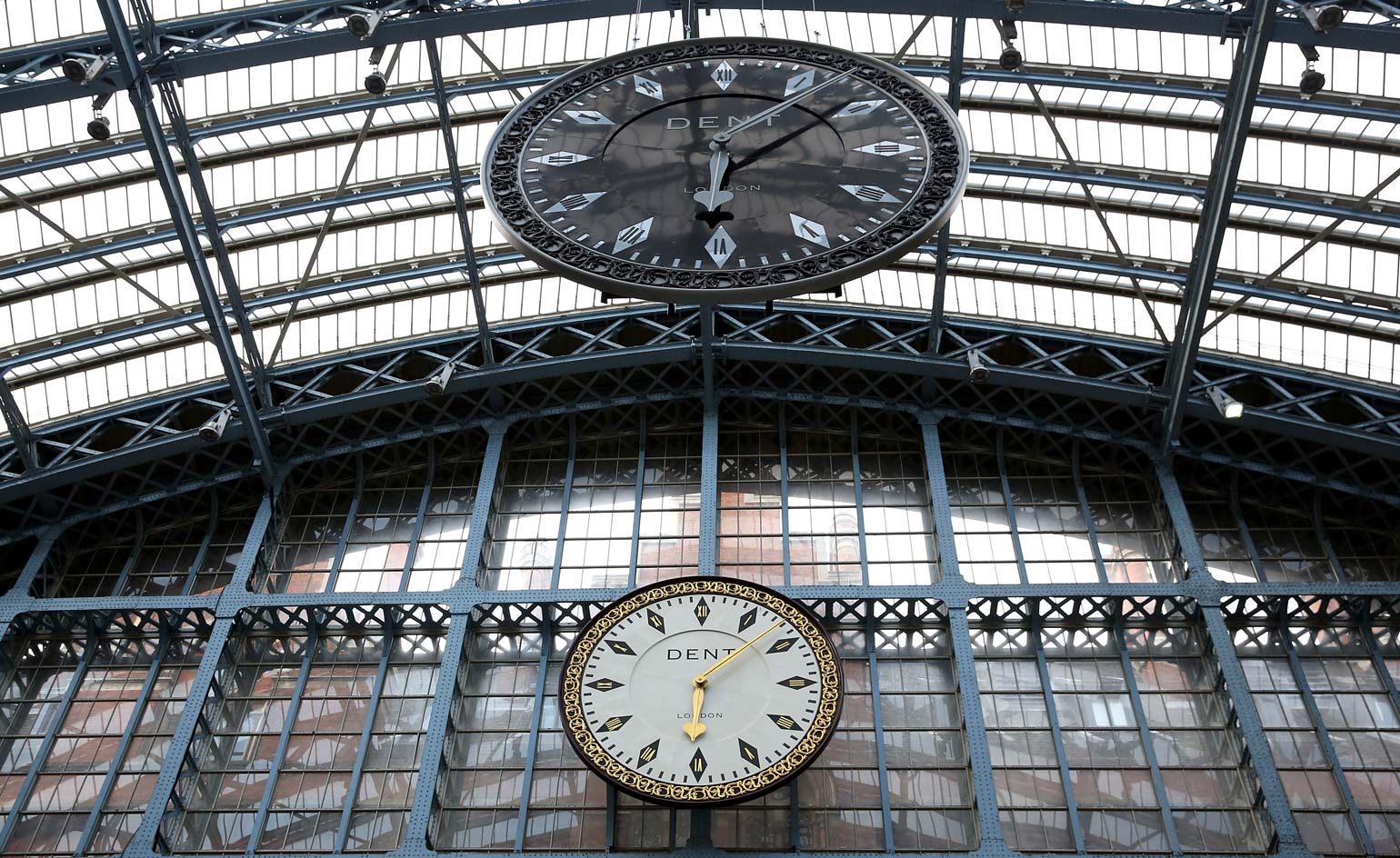
The installation is a working replica of the station’s Dent clock – only reversed out, so that it is black where the original is white and vice versa.

The artist with her work. The station is a particularly suitable setting for this installation, as Parker notes, there are few places where time’s duality is quite as strange.
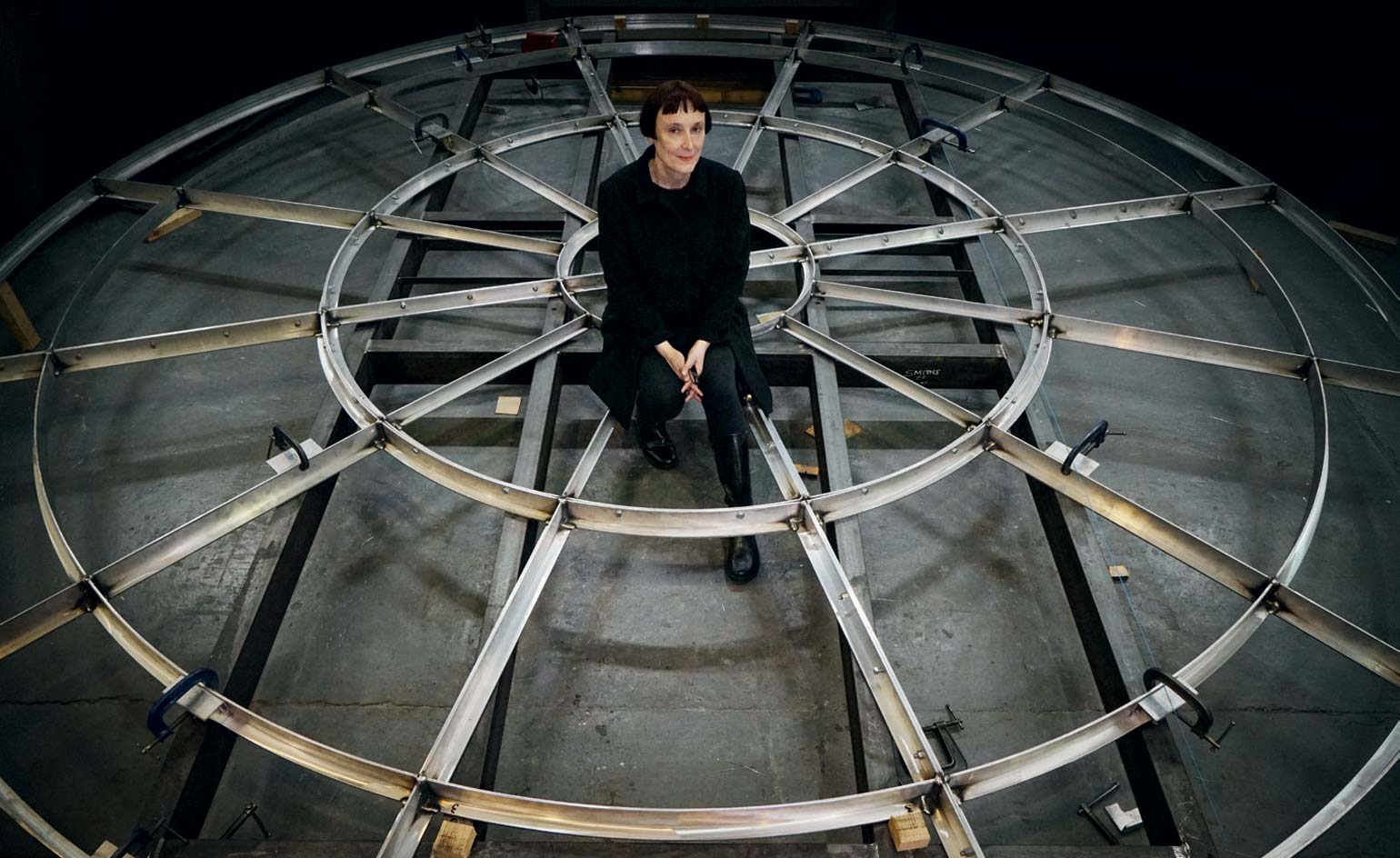
'I like the idea of hanging and time,' explains Parker. 'Clocks aren’t usually free-floating. I like that about this, that time is this rogue thing; that there is one more time – and it could almost unhook itself from its situation and go somewhere else.’
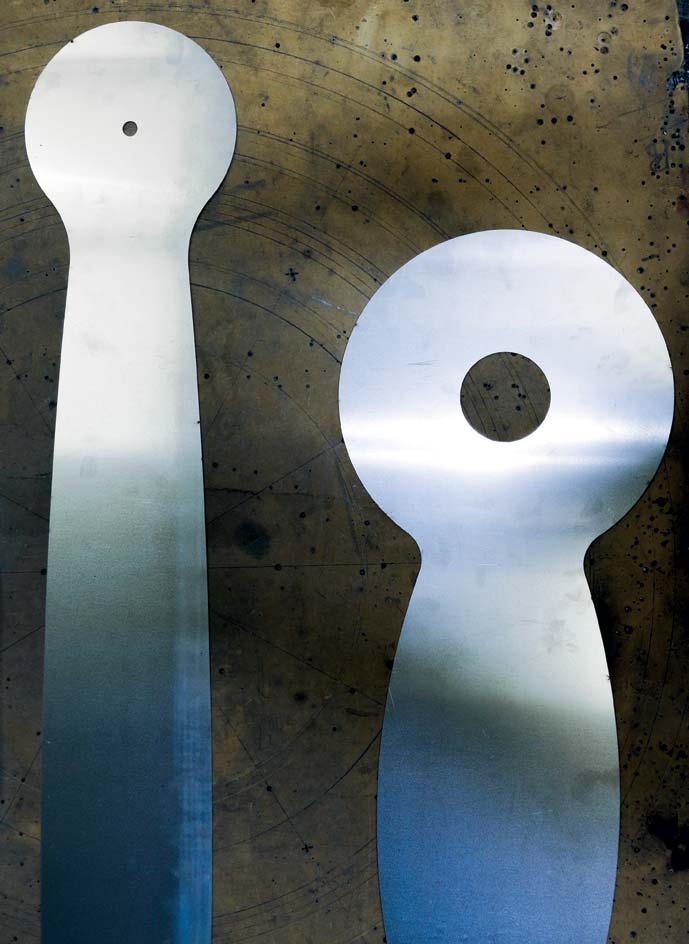
The giant hands of PArker's installation during their manufacture at Smith of Derby.
Receive our daily digest of inspiration, escapism and design stories from around the world direct to your inbox.
-
 A day in Ahmedabad – tour the Indian city’s captivating architecture
A day in Ahmedabad – tour the Indian city’s captivating architectureIndia’s Ahmedabad has a thriving architecture scene and a rich legacy; architect, writer and photographer Nipun Prabhakar shares his tips for the perfect tour
-
 You can now stay in one of Geoffrey Bawa’s most iconic urban designs
You can now stay in one of Geoffrey Bawa’s most iconic urban designsOnly true Bawa fans know about this intimate building, and it’s just opened as Colombo’s latest boutique hotel
-
 Pentagram’s identity for eVTOL brand Vertical Aerospace gives its future added lift
Pentagram’s identity for eVTOL brand Vertical Aerospace gives its future added liftAs Vertical Aerospace reveals Valo, a new air taxi for a faster, zero-emission future, the brand has turned to Pentagram to help shape its image for future customers
-
 Out of office: The Wallpaper* editors’ picks of the week
Out of office: The Wallpaper* editors’ picks of the weekFrom sumo wrestling to Singaporean fare, medieval manuscripts to magnetic exhibitions, the Wallpaper* team have traversed the length and breadth of culture in the capital this week
-
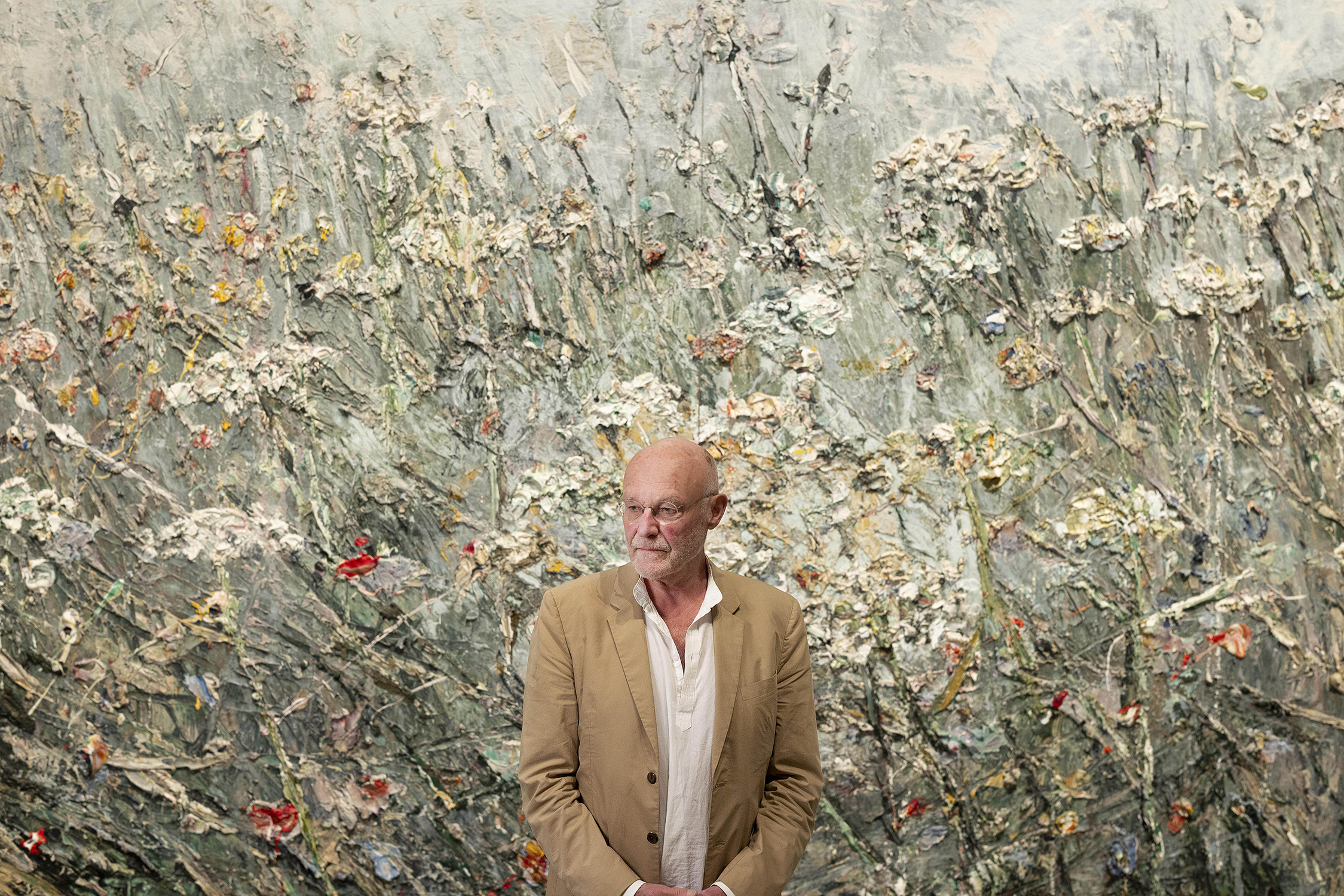 Vincent Van Gogh and Anselm Kiefer are in rich and intimate dialogue at the Royal Academy of Arts
Vincent Van Gogh and Anselm Kiefer are in rich and intimate dialogue at the Royal Academy of ArtsGerman artist Anselm Kiefer has paid tribute to Van Gogh throughout his career. When their work is viewed together, a rich relationship is revealed
-
 William Kentridge on failed utopias and transcending borders: ‘art must defend the uncertain’
William Kentridge on failed utopias and transcending borders: ‘art must defend the uncertain’Azu Nwagbogu profiles South African artist William Kentridge, whose show at London's Royal Academy of Arts runs until 11 December 2022
-
 2022 Royal Academy Architecture Prize recognises Renée Gailhoustet
2022 Royal Academy Architecture Prize recognises Renée GailhoustetThe 2022 Royal Academy Architecture Prize is awarded to Renée Gailhoustet, with the shortlist for the 2022 Royal Academy Dorfman Award revealed at the same time
-
 Steel yourself for metal guru Antony Gormley’s Royal Academy blockbuster
Steel yourself for metal guru Antony Gormley’s Royal Academy blockbusterThe British sculptor takes you through a room brambled with steel spindles, inside pitch-black tunnels, before platooning you in a room filled with seawater
-
 Phyllida Barlow has us on the edge at the Royal Academy
Phyllida Barlow has us on the edge at the Royal AcademyThe British sculptor’s teetering site-specific installations open up new perspectives to the London institution’s architecture
-
 Head trip: the ’Veronica Scanner’ creates live 3D portraits at the Royal Academy of Arts
Head trip: the ’Veronica Scanner’ creates live 3D portraits at the Royal Academy of Arts -
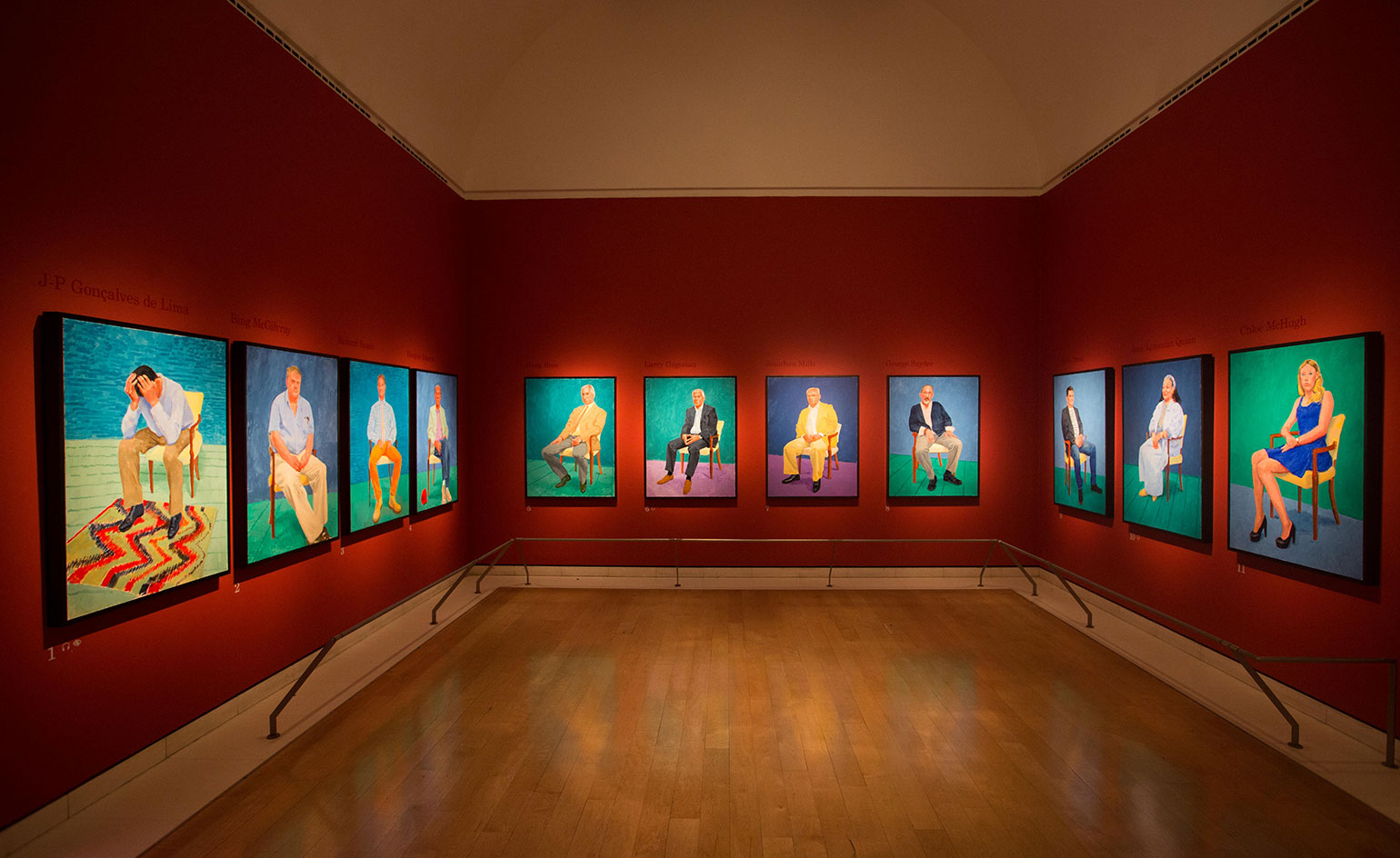 ’82 Portraits and 1 Still-life’: David Hockney returns to the RA
’82 Portraits and 1 Still-life’: David Hockney returns to the RA